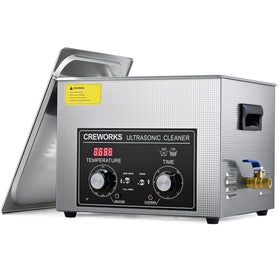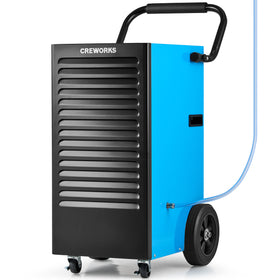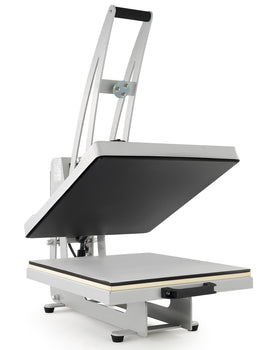With over 10000+ orders
With over 10000+ orders
Remember that moment when you first noticed that musty smell seeping through your floorboards? Or that sinking feeling when your perfectly installed hardwood floors started warping for no apparent reason? Your crawl space might be telling you something important.
Most homeowners rarely think about their crawl space until problems emerge. These problems are the first signs that their crawl space dehumidifier needs have been ignored too long.

Remember that musty greeting when you open your door after being away? Or how about those floors that just don't feel quite right anymore? These aren't just minor annoyances – they're your home's early warning system. Here are the critical signals that your crawl space might be struggling with excess moisture:
If the relative humidity in your crawl space exceeds 65%, it becomes a breeding ground for mold and mildew. Experts recommend keeping humidity levels below 60% to prevent these issues. Investing in a hygrometer can help you monitor these levels accurately, allowing you to take action before problems escalate.
Visible signs of mold or mildew on surfaces within the crawl space are clear indicators of excessive moisture. Mold not only damages structural components but also poses health risks to occupants, particularly those with allergies or respiratory conditions. If you notice any discoloration or musty odors, it’s essential to address the humidity issue promptly.
A persistent musty smell emanating from your crawl space is often a sign of trapped moisture and potential mold growth. This odor can permeate into your living spaces, affecting indoor air quality. If you detect this smell, it's crucial to investigate further and consider installing a dehumidifier.
If you observe condensation forming on pipes, ductwork, or other surfaces, it indicates high humidity levels. This condensation can lead to water damage and promote mold growth if left unaddressed. A dehumidifier can help reduce moisture in the air and prevent this condensation from occurring.
Excessive moisture can weaken wooden structures in your crawl space, leading to rot and compromising the integrity of your home. If you notice soft or crumbling wood, it's a sign that humidity levels are too high and that immediate action is required to mitigate further damage.
High humidity levels attract pests such as termites, rodents, and insects that thrive in damp environments. If you notice an uptick in pest activity in or around your crawl space, it may be time to install a dehumidifier to create an inhospitable environment for these unwanted guests.
If your insulation appears damp or is losing its effectiveness, this could be due to high humidity levels in the crawl space. Moisture can saturate insulation materials, reducing their thermal performance and leading to higher energy bills. A dehumidifier can help maintain optimal humidity levels and protect your insulation.
These signs rarely appear alone. They're more like dominoes – when one falls, others tend to follow. The good news? Catching these warnings early can save you from bigger headaches down the road.

Once you recognize these warning signs, you'll naturally wonder about the solution. A dehumidifier is essentially your home's moisture control system – think of it as a guardian that continuously works to maintain the perfect balance of humidity in your space.
What does a dehumidifier do? It pulls excess moisture from the air, transforming your damp, problematic areas into controlled environments that protect rather than harm your home.
For crawl space and basement specifically, these systems are designed to work in challenging conditions. A crawl space dehumidifier operates in tight spaces with potentially poor air circulation, often in less-than-ideal temperatures. The best units can maintain optimal humidity levels without requiring constant attention.
When you take control of your crawl space's moisture, you're not just solving one problem – you're preventing a cascade of issues. Proper dehumidification:

When it comes to addressing these issues effectively, the Creworks 130 PPD Commercial Dehumidifier offers a robust solution. It handles spaces from 500 to 1440 square feet – perfect for most crawl spaces and basements. With its detachable display panel and intelligent operating modes, it brings professional-grade moisture control within reach of any homeowner.
The challenges of a damp crawl space won't resolve themselves. Each day of excess moisture is another day your home's foundation faces unnecessary stress. But here's the good news: with the right approach, these problems are entirely preventable.
Your crawl space might be out of sight, but its impact reaches every corner of your home. By taking action now, you're not just solving today's moisture problems – you're protecting your home's future.
Think of it this way: while we can't see the moisture building up beneath our feet, we can certainly feel its effects throughout our homes. Taking control of your crawl space's environment isn't just about fixing a current problem – it's about creating a foundation of protection that benefits your entire home for years to come.











